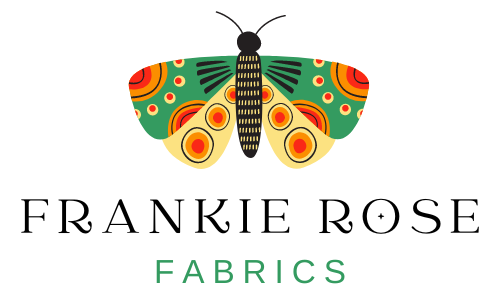What is flannel fabric?
Flannel is a catch-all term for a group of fabrics made of cotton, wool, or cotton blends that are napped on one or both sides for softness and warmth. They originated in 17th century Wales as a warm layer for farmers and workers of all kinds. They became popular in the United States after being issued to Civil War soldiers in the 1880s, and entered the fashion scene in the 1990s with the rise of grunge music. Today, flannel is seen in everything from tailored shirts to workwear to cozy pajamas.

What else would the ultimate lumberjack, Paul Bunyon, wear but flannel?
|

Kate Moss elevating plaid to haute couture in 2023.
|
How is flannel fabric made?
Flannel is a woven fabric with no stretch. Generally, it is made in a plain or twill weave, though some of the most popular flannel for home sewists has the interesting twist of being made with a crepe weave. While flannel and plaid are often associated with one another, there are many wonderful solid and printed flannels to be found.
All flannel fabrics are brushed, or “napped,” on one or both sides, a process that gives them their characteristic softness and warmth. The fabric is rubbed with fine metal brushes to tiny fibers from the surface, which in turn, creates millions of insulating air pockets, keeping you warm in a similar way to fleece or down.
 |
What clothing can I make with flannel?
As with all fashion, the sky's the limit for your creative ideas of what to make with flannel. However, due to its insulating nature, flannel is best for fall and winter weather. Traditionally, we think of button down shirts, cozy pajamas, and soft robes as classic flannel wear. However, we’ve seen some incredible modern dresses, skirts, and pants made with flannel, too!

Is flannel hard to sew with?
Flannel is one of the easiest fabrics to sew with, similar to poplin, quilters cotton, or any plain weave or twill. It has no stretch, is very stable, and not slippery. In fact, all those little lifted fibers create a bit of friction between the layers of fabric, making them very unlikely to move while you are cutting or sewing. Don’t forget to finish your seams when sewing with flannel, as it will fray in the wash if left with raw edges.
How should I wash flannel fabric?
As with all fabrics, it’s important to wash and dry your flannel fabric as you normally would before sewing with it, as flannel can shrink 3-11% in size. Cotton flannels can withstand warm washer and dryer temperatures, but your flannel garments will last longer if you wash on cold and dry on low or air dry. It is safe to iron cotton flannel fabrics.
Why is organic cotton flannel fabric better than mainstream?
Organic cotton fabrics are better for your body and for the environment. All of our organic cotton flannel fabrics are both organic and oeko-tex certified, meaning they are free of up to 350 chemicals known to be toxic to the human body. Growing organic cotton uses less energy, produces less pollution, uses fewer chemicals, and improves soil quality, making it highly environmentally sustainable.
|
Learn more about the importance of organic cotton to the environment at Textile Exchange. |

